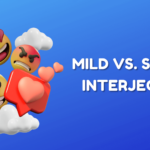Language is like a useful tool, and one of its parts that adds emotion is the emotive interjection. In this article, we’ll explain what emotive interjections are, how they’re used, and share examples. This will help you understand how they play a role in making communication more effective.
What are Emotive Interjections?
Emotive interjections, also known as exclamations, are standalone expressions conveying strong emotions. They punctuate speech and writing to connect with the audience emotionally. Examples include “Wow” for surprise, “Yay” for joy, and “Ugh” for displeasure.
How to Use Emotive Interjections?
Emotive interjections are used in both written and spoken language to convey emotions, connecting with the audience on a more personal level. They are often found at the beginning or in the middle of sentences and can be emphasized with exclamation marks.
Here’s a practical breakdown of their usage:
Expressing Surprise or Amazement:
- Wow, that’s surprising!
- Oh my goodness, I didn’t expect that!
Conveying Joy:
- Yay, we won!
- Hooray, it’s your birthday!
Expressing Displeasure or Frustration:
- Ugh, I forgot my keys.
- Oh no, not again!
Demonstrating Excitement:
- Yahoo, the concert is tonight!
- Awesome, I got the job!
Showing Sympathy or Concern:
- Oh dear, I hope you feel better soon.
- Alas, the news is heartbreaking.
Examples of Emotive Interjections in Sentences:
Here are some examples of using Emotive Interjections in Sentences:
- Wow, this view is breathtaking!
- Oh my, I didn’t see that coming.
- Yippee, we’re going on vacation!
- Hooray, the sun is shining.
- Ugh, this traffic is unbearable.
- Oh no, I spilled coffee on my laptop!
- Yahoo, the new movie is out today!
- Awesome, we’re going on a roller coaster!
Paired Conjunctions and Emotive Interjections:
Emotive interjections are sometimes paired with conjunctions for added nuance. Examples include:
Surprise and Joy:
- Oh wow, you got me a gift!
- Ah, what a beautiful sunset!
Displeasure and Frustration:
- Ugh, but why is this happening?
- Oh no, yet another delay!
Tables for Better Understanding:
| Emotion | Emotive Interjections |
|---|---|
| Surprise | Wow, Oh my, Oh wow |
| Joy | Yay, Hooray, Awesome |
| Displeasure | Ugh, Oh no, Darn |
| Excitement | Yahoo, Awesome, Yippee |
| Sympathy | Oh dear, Alas, Oh no |
Conclusion:
Emotive interjections add a human touch to language, conveying emotions in a straightforward manner. By understanding their usage and exploring examples, we can appreciate how these simple expressions enhance our communication, making it more relatable and engaging.


